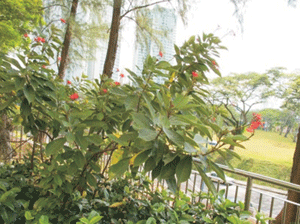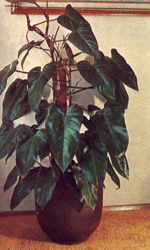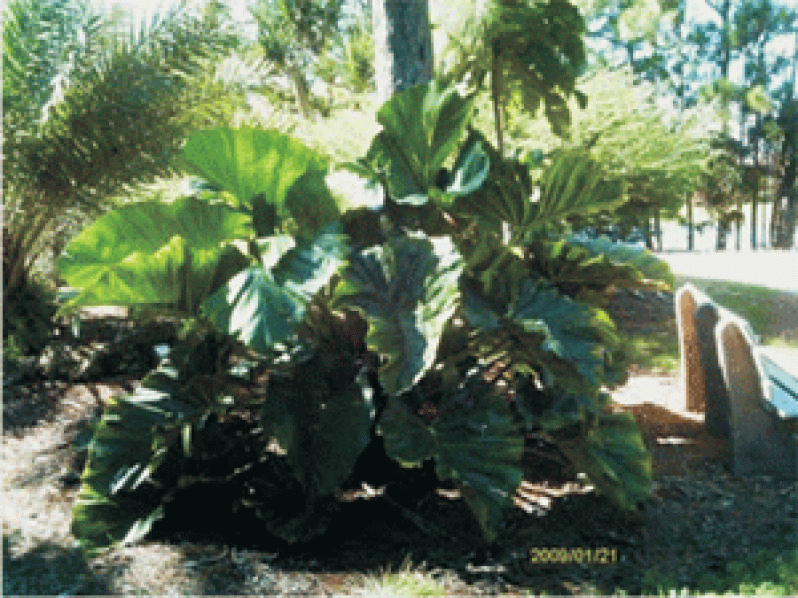The Jatropha: Treasured for more than its beauty
RESEARCH has shown that oil from the crushed seeds of the Jatropha plant makes an excellent biofuel. Oil content of Jatropha seeds varies from 28% to 30%, and there is an 80% extraction rate.  Provided that the soil is average, one hectare of Jatropha will give 400 to 600 litres of oil that can be processed to produce a high-quality biodiesel fuel usable in a standard diesel engine.
Provided that the soil is average, one hectare of Jatropha will give 400 to 600 litres of oil that can be processed to produce a high-quality biodiesel fuel usable in a standard diesel engine.
Accordingly, millions of acres of land in Asia and Sub-Saharan Africa have come under Jatropha cultivation over the past decade.
In 2008, worldwide Jatropha farming was pegged at somewhere in the vicinity of 700,000 hectares, and it is anticipated that in the year 2015, the cultivation will be in the vicinity of about 12 million hectares.
Characteristics
The Jatropha is a species of flowering plant native to the American tropics — mainly Mexico and Central America — and is a semi-evergreen shrub or small tree which can reach heights of up to twenty feet.
This resilient plant is water and drought-resistant. It survives almost under any condition, and can grow for many years. Vegetative propagation has been achieved by stem cuttings, grafting, and budding, as well as by air layering techniques.
Ornamental value
In Guyana, however, commercial cultivation of the Jatropha for biodiesel production is yet to catch on, because local gardeners prize the plant for its star-shaped flowers, easy care, and utility in landscaping.
This plant establishes an attractive hedge, and is ideal for manufacturing beautiful ornaments.
Local horticulturalist, Hans Neher, who grows the Jatropha, has disclosed that the three most popular varieties cultivated locally are the Jatropha pandurifolia, Jatropha gossypiifolia, and Jatropha curcas. The one most commonly used for landscaping is the Jatropha pandurifolia.
He said: “The beauty of the plant is that it produces a bunch of lovely red flowers on the tip of each branch continuously, regardless of the weather conditions.”
Neher remarked that the Jatropha flower production is not interrupted by rain or sun. The plant carries leaves and flowers on the upper end of the branches, making its lower part, which is without foliage, look empty.
Accordingly, the real beauty of the Jatropha is developed when it is planted together with shorter plants, which hide the bare stems. Neher recommends that the Jatropha be planted among variegated (and scented) gardenia, low-growing ferns, miniature yellow Ixoras, or Acalyphas as a plant group, because they provide a contrast to the Jatropha, and at the same time act as a bottom filler to the plant. He added that the Jatropha needs space, and is therefore not recommended for very small gardens.
Neher recommends that the Jatropha be planted among variegated (and scented) gardenia, low-growing ferns, miniature yellow Ixoras, or Acalyphas as a plant group, because they provide a contrast to the Jatropha, and at the same time act as a bottom filler to the plant. He added that the Jatropha needs space, and is therefore not recommended for very small gardens.
“It can grow up to eight feet if not pruned from time to time. Pruning should start when the plant is twelve inches high, and continue as the plant begins to produce multiple branches,” he said.
Neher says the nursery of the Number One Flower Shop prefers air layering for propagation of the Jatropha, because this technique has a success rate of over 95%. The use of pesticides, he said, is not necessary, because of the pesticidal and fungicidal properties of the plant.
The Jatropha curcas has, in recent years, gained fame as an excellent producer of biofuel.
Who knows?
With the current focus on renewable energy, maybe large-scale production of the Jatropha for biodiesel may soon become a major activity in Guyana, given the large acreages of land currently available for agricultural production.
For the individual gardener, the Jatropha is available at the Number One Plant Shop here on Sheriff Street, Campbellville, Georgetown. Telephone #227-8094.



.jpg)








